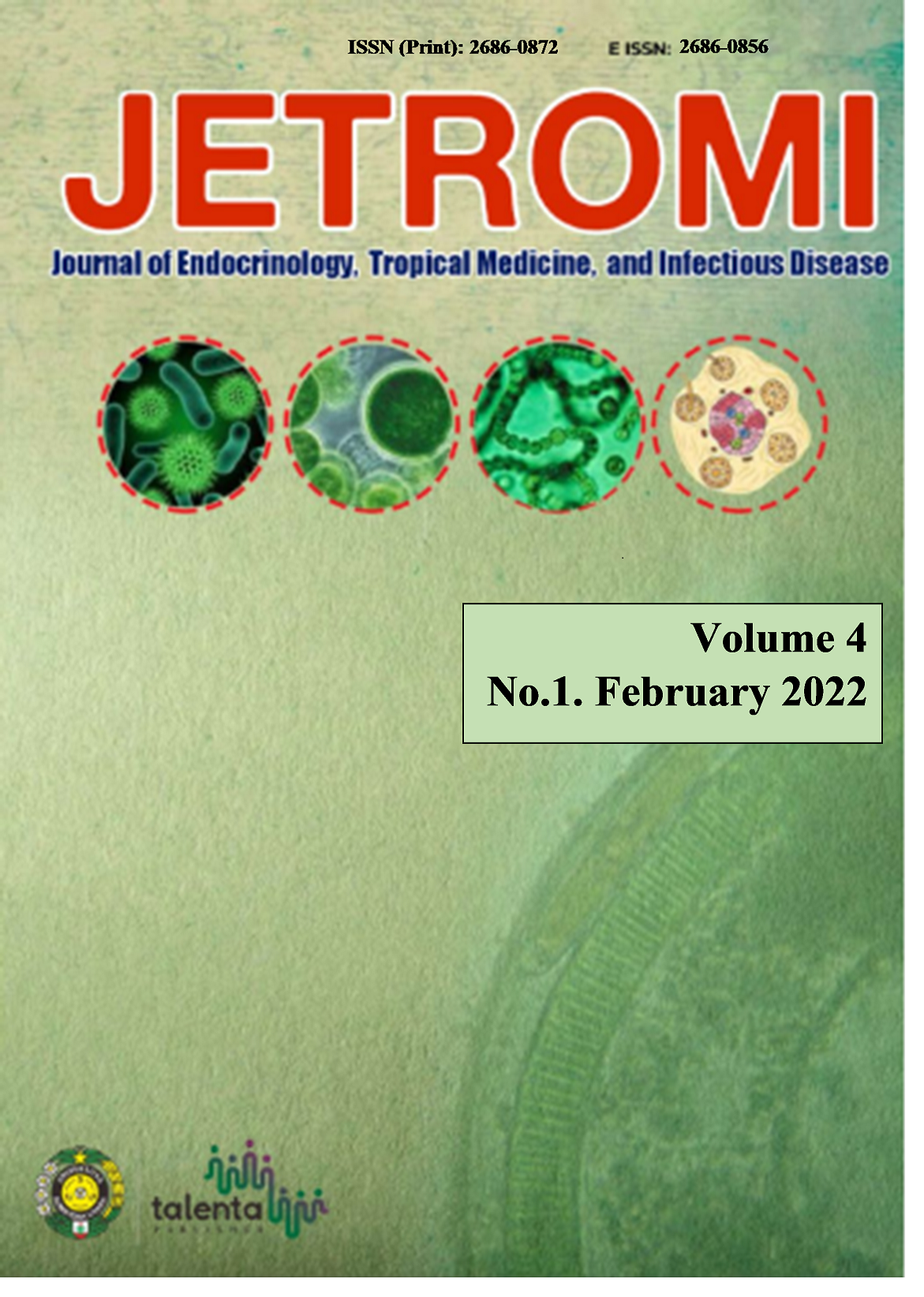The Differences of Pepsinogen I and H. Pylori Levels in Patients With Gastric Premalignant Lesion
DOI:
https://doi.org/10.32734/jetromi.v4i1.8792Keywords:
Gastric Cancer, Helicobacter Pylori, Pepsinogen, Gastric Premalignant LesionAbstract
Background: Gastric cancer is the fifth most common cancer worldwide, precancerous lesions is triggered by H. pylori infection and any other factors. Recent reports confirmed that serum pepsinogens are a valuable biomarker gastric cancer even before the discovery of H. pylori.
Research Methods: This study is a cross-sectional study involving 80 confirmed patients with Gastric Premalignant Lesion at Adam Malik General Hospital, Permata Bunda General Hospital, Medan, on April-November 2018. These two variables is sought using the Mann Whitney test (normality test P < 0,05). H. pylori were diagnosed by positive result of examination of Carbon-14 urea breath test (C-UBT) or Campylobacter-like organism (CLO). Examination of Pepsinogen I measured by Abbott ARCHITECT Pepsinogen I Reagent Kit (Abbott Laboratories Inc., Chicago, IL, USA).
Result: Of the 60 participants who confirmed has gastritis premalignant lesion according to the inclusion criteria. From the table of characteristic descriptive, it was found that 48 patients were male (60%) and 32 patients were female (40%). From CLO and 14C-UBT, it was found 35 patients were H. pylori-positive (43,8%) and 45 patients were H. pylori-negative (56,3%). Mean age was 51.03 ± 10.97  years. Mean levels of Pepsinogen I was 44.28 ± 21.77. From the second table, it was found that 35 (43,8%) patients with H. pylori-positive has 47.84 mean levels of Pepsinogen I, and 45 (56,3%) patients with H. pylori-negative has 34,79 mean levels of Pepsinogen I. The results of Mann Whitney's correlation analysis found a significant correlation between Pepsinogen (PG) I and H. Pylori in patients with Gastric Premalignant Lesion (p < 0,05).
Conclusion : It was found that there was a correlation between Pepsinogen (PG) I levels and H. Pylori in patients with Gastric Premalignant Lesion (p < 0,05).
Downloads
Downloads
Published
Issue
Section
License
Copyright (c) 2022 Journal of Endocrinology, Tropical Medicine, and Infectious Disease (JETROMI)

This work is licensed under a Creative Commons Attribution-NonCommercial-ShareAlike 4.0 International License.
The Authors submitting a manuscript do so on the understanding that if accepted for publication, copyright of the article shall be assigned to Journal of Endocrinology, Tropical Medicine and Infectious Diseases (JETROMI).
Copyright encompasses exclusive rights to reproduce and deliver the article in all form and media. The reproduction of any part of this journal, its storage in databases and its transmission by any form or media, will be allowed only with a written permission from Journal of Endocrinology, Tropical Medicine and Infectious Diseases (JETROMI).








